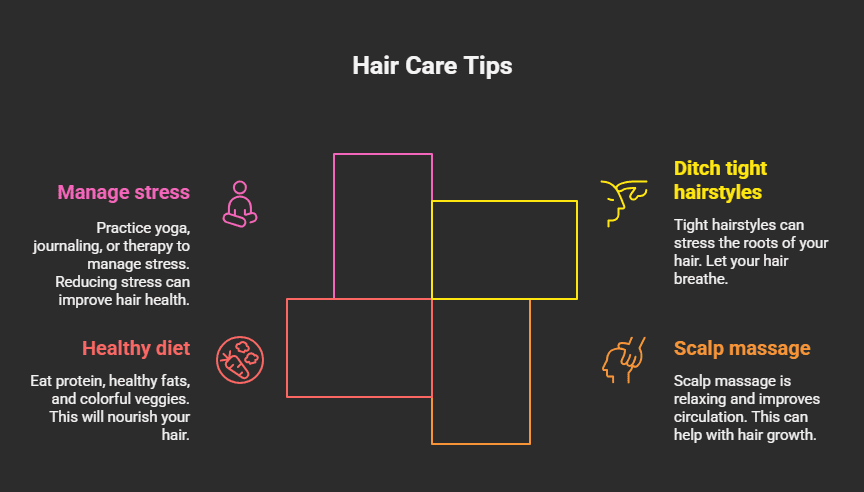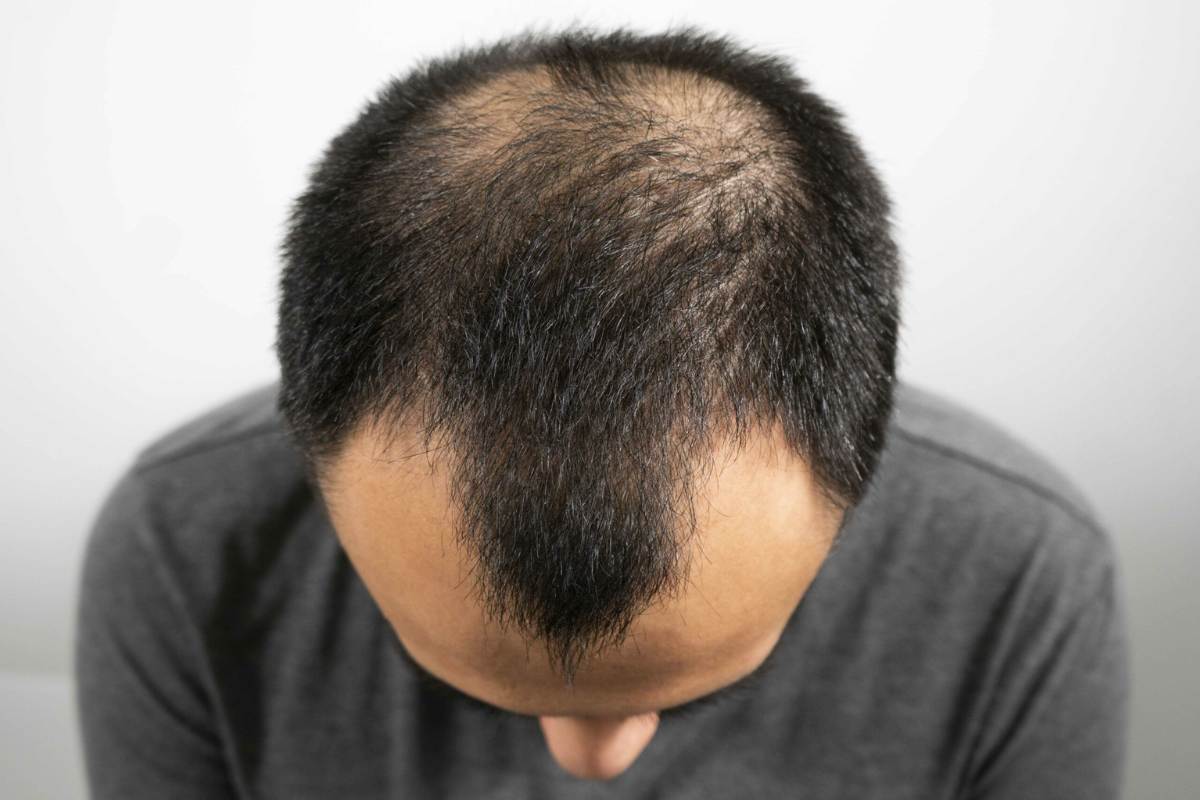The Hair Today, Gone Tomorrow Dilemma
Ever looked in the mirror and noticed your hairline creeping back? Or maybe you spotted a widening part that wasn’t there before. It’s not your imagination playing tricks; it could be androgenetic alopecia, better known as pattern hair loss. And let’s be real: it messes with your confidence in a way that’s hard to explain unless you’ve lived it.
But before the panic sets in, breathe. This isn’t a death sentence for your follicles. It’s more like a warning light on your dashboard. And yep, there are things you can do about it (more on that soon).
Let’s break it all down.
What Exactly Is Androgenetic Alopecia?
Think of it as your hair’s “genetic timer.”
Androgenetic alopecia is a hereditary condition. That means it runs in families, so if your dad or mom had it, there’s a good chance you might too. It affects both men and women, just differently.
It’s all about your hormones, specifically androgens like DHT (dihydrotestosterone). These little guys bind to your hair follicles and slowly shrink them. The result? Thinner, shorter, weaker hair… until one day, the follicle taps out completely.
Now, here’s the twist: this doesn’t happen overnight. It sneaks up on you. Slowly. Quietly. Until boom, you’re suddenly Googling “how to regrow hair” at 2 a.m. (We’ve all been there.)
Men vs. Women: Different Patterns, Same Heartache
For Men: The Classic “M” and the Bald Spot Saga
Men usually notice a receding hairline first, which often forms a shape that looks like the letter “M.” Then comes the crown (that dreaded bald spot at the back). Eventually, those two zones may join forces, leaving a horseshoe-shaped ring of hair.
Not exactly the look most guys are going for.
For Women: The Widening Part and the Volume Vanish
Women, on the other hand, rarely go completely bald from androgenetic alopecia. Instead, they experience a diffuse thinning, mostly on the top and crown. The center part widens, volume disappears, and the ponytail gets skinnier by the month.
And the emotional toll? Massive. Because hair isn’t just hair, it’s identity, femininity, control.
Funny how those little strands carry so much weight, isn’t it?
What Triggers It?
Okay, so genetics plays the starring role here. But they’re not the only culprit. Sometimes, it’s like the perfect storm of internal and external chaos.
- Hormonal fluctuations, like those during menopause, pregnancy, or thyroid disorders.
- Stress – yep, chronic stress can send your hair into a tailspin.
- Nutrition gaps – lack of iron, protein, or biotin? Your scalp notices.
- Age – the older we get, the less active our follicles become.
- Medications – some drugs have hair loss as a side effect.
Point is, it’s not always a simple “blame your parents” story. There are layers to this.
The Emotional Fallout (Because It’s Not Just About Hair)
This is the part no one talks about enough.
The panic you feel when you see a clump in the shower drain. The awkward attempts to hide thinning spots with a clever combover or messy bun. The constant, exhausting math of “how many strands did I lose today?”
It’s draining. And isolating. And downright unfair.
Especially because most people brush it off. “It’s just hair,” they say. But it’s never just hair.
So if you’re reading this and nodding through tears or frustration, know this: your feelings are valid. You’re not vain. You’re human.
Diagnosis: Don’t Just Guess, Get It Checked
Before you assume it’s androgenetic alopecia, here’s a tip: get a proper diagnosis. Because other conditions, like alopecia areata, telogen effluvium, or even scalp infections, can mimic the symptoms.
Dermatologists usually do a combo of:
- Scalp examination
- Medical history review
- Hair pull test
- Sometimes a biopsy (don’t worry, it’s not as scary as it sounds)
Bottom line? Don’t self-diagnose on Instagram. Let the pros do their thing.
Treatment: The Sooner You Start, The Better the Odds
Here’s the silver lining: hair loss from androgenetic alopecia can be managed. Not always reversed, but slowed, sometimes even improved.
Topical Minoxidil (Rogaine):
A cult favorite for a reason. Available over the counter. It works by improving blood flow to hair follicles and extending the growth phase. But patience is key; it takes months to show results.
Finasteride (Propecia):
Only for men (usually). It blocks DHT, the bad guy in this story. It’s taken orally and can help halt progression, sometimes even regrow hair. Side effects? Yeah, a few. Talk to your doctor.
Low-Level Laser Therapy (LLLT):
Think of it as red light therapy for your scalp. Painless. Some people swear by it. Others don’t see much change. Jury’s still out, but it’s worth exploring.
Platelet-Rich Plasma (PRP) Injections:
Here’s where science meets sci-fi. Your blood is drawn, spun to concentrate growth factors, and then injected into your scalp. Expensive? Very. But promising for many.
Hair Transplant Surgery:
The big guns. It’s permanent (if done right), natural-looking (if done really right), and pricey. But for those who’ve tried everything else, it can be life-changing.
Supplements & Nutrition:
Think iron, zinc, biotin, and omega-3s. But here’s the thing, they’re supportive, not a cure. So don’t expect miracles from a gummy.
Can Lifestyle Help? (Short Answer: Absolutely)

Your daily habits impact your follicles more than you think.
- Ditch tight hairstyles – they stress the roots. Let it breathe.
- Scalp massage – weirdly relaxing and improves circulation.
- Eat like you love your hair – protein, healthy fats, colorful veggies.
- Manage stress – yoga, journaling, therapy… whatever works for you.
Tiny changes, but over time? They matter. A lot.
The Myth Busting Moment
Let’s kill a few myths, shall we?
- “Wearing hats causes baldness.” Nope.
- “Shaving makes hair grow back thicker.” Total nonsense.
- “Only old people go bald.” Not even close, early 20s cases are super common.
- “It’s just cosmetic.” Tell that to someone who’s been avoiding mirrors for months.
So don’t let these lies mess with your head (or your healing).
You’re Not Alone, And You’re Not Powerless
This journey? It’s tough. Frustrating. Sometimes even humiliating. But there’s hope.
Modern science, new treatments, and support communities are changing the game. Whether you choose meds, laser caps, wigs, or just radical self-acceptance, there’s no wrong way to deal with hair loss.
You do what makes you feel like you again.
And hey, if no one’s told you this today: you’re not defined by your hairline. You’re still strong. Still beautiful. Still you.
Even if your strands have other plans.
One Last Thought
It’s okay to grieve. To cry over the brush. To feel the sting when someone says, “You’re losing hair.” But don’t let it break you.
Let it rebuild you, wiser, kinder, more resilient. Because healing doesn’t always mean getting every strand back. Sometimes, it means learning to love the reflection that’s changing… and owning it anyway.
Now go, flip that part, toss on that cap, or schedule that consultation. Whatever you do, just don’t give up.








